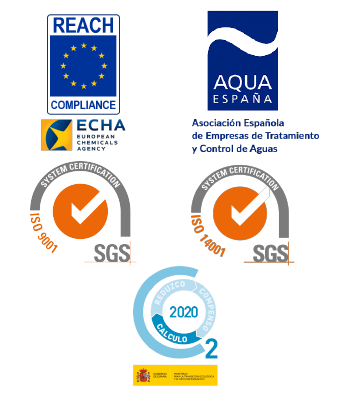
Main Types of Impurities in Water

One of the most widespread applications of active charcoal or activated charcoal is for water purification. This is mainly because AC is highly effective in retaining organic matter in the water and has a much lower associated cost than other alternatives as it requires practically no energy or investment in equipment.
To better understand how activated carbon works in purification processes and what makes it so effective, first you need to know what types of impurities can be found in water.
Both sewage and water from rivers, wells or lakes contain all kinds of elements which can produce undesirable effects on water, either because they give it an unpleasant colour, taste or smell or because they are toxic to the body. Therefore, it is important to retain or remove them before the water reaches the consumer.
These elements can be:
- Organic compounds
- Inorganic compounds
- Mixed-nature compounds
In this post, we’ll focus on the first category, since they account for the vast majority of compounds found in water. As for inorganic and mixed compounds, these are more specific cases, mainly related to industry, and we’ll discuss them in more depth in another blog post
As the name implies, organic compounds are made up of organic matter and this can be of completely natural origin, as is the case of geosmines, or come from synthetic organic chemicals and/or disinfection by-products, such as phenols and trihalomethanes.
In general, the main organic contaminants are usually organic compounds from nature, in particular the growth and decomposition of vegetation. However, this can depend on various factors, such as the location of the source from which the water is extracted, the time of year and rainfall.
For example, surface waters from rivers or lakes near agricultural areas often contain high concentrations of synthetic organic chemical components, such as fertilisers, after heavy rainfall.
Suspended organic compounds can be removed with rudimentary filtration systems composed of anthracite, silex and/or garnet or even using sedimentation or coagulation systems, but activated carbon is needed to retain all those dissolved organic compounds.
At this point, it is important to know the type of contaminants that are in the water being purified and the concentrations of each as we use these parameters to determine which carbon and specific working conditions to use. To do this, we recommend conducting a pre-analysis of the water you want to treat.
At ChiemiVall we have extensive experience in providing technical advice for water treatment. We can help you choose the best type of activated carbon and the working conditions and size of filters.
Likewise, we can develop tailor-made products for complex cases that require the simultaneous use of carbons with different specifications.




